Are you looking for ways to refresh your artworks and make them more expressive? Then brush tips are an excellent tool for you! In this tutorial, I will show you how to enhance not only the aesthetics of your images with targeted brush strokes but also strengthen their central message. Using an example inspired by the film "Sin City," we will explore the scope and implementation of using brush tips.
Key Insights
- Brush tips are essential tools for improving image aesthetics.
- The targeted use of brush tips can significantly influence the mood and message of an image.
- Use brushes effectively on different layers to gain more flexibility in your artworks.
Step-by-Step Guide
Let's begin by exploring how to use brush tips in your work step by step.
1. Understanding Image Composition
First, it's important to understand the basic composition of your image. Here you can see how I edited the bottom layer of a dark sky to highlight the deep values.
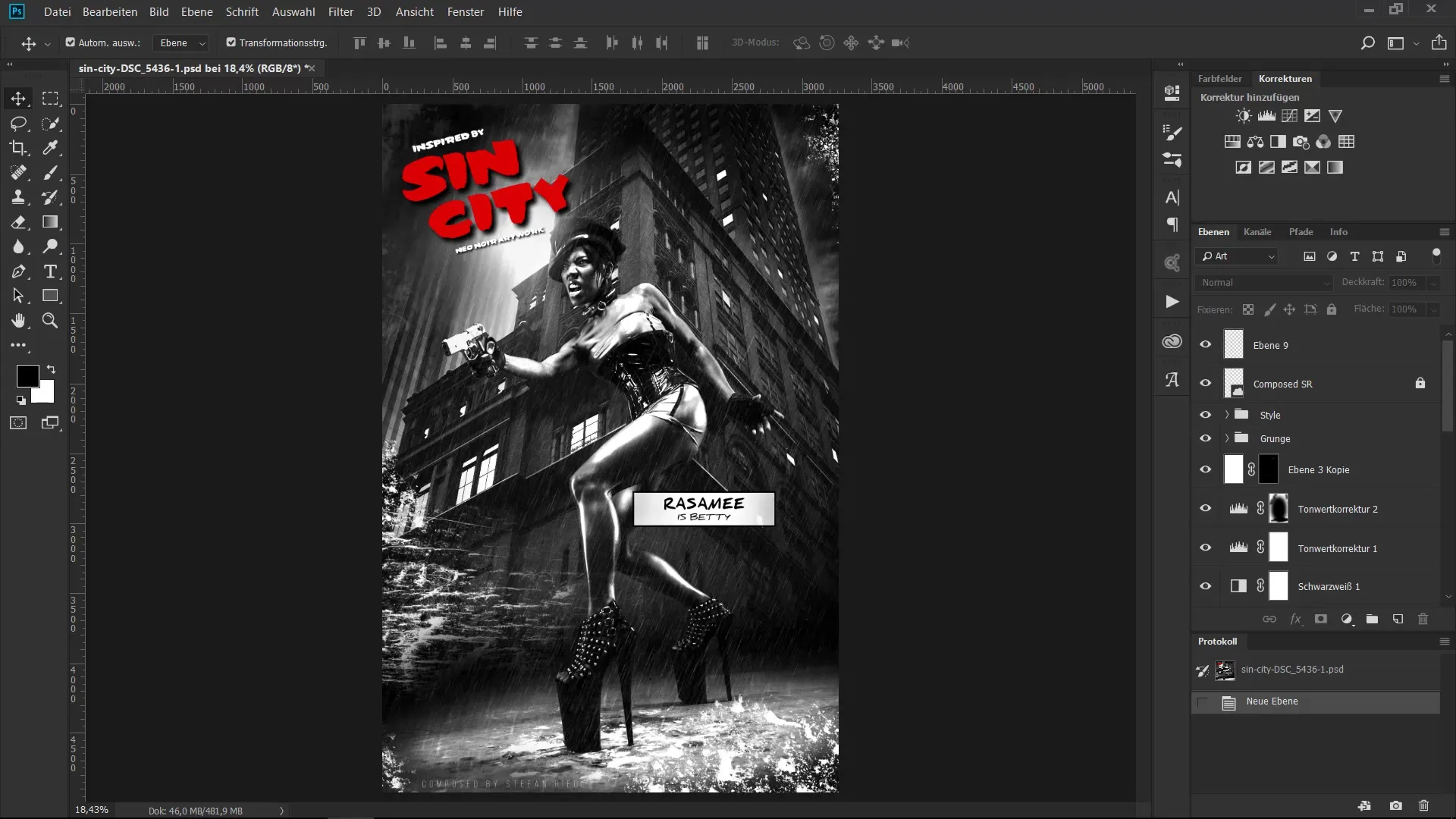
This sky forms the basis for further design. Note the feeling you want to transport visually.
2. Selecting and Adjusting the Background
The background should support the thematic context of your image. I selected and edited an appropriate background from Unsplash. In my workflow, I consistently work with adjustment layers.
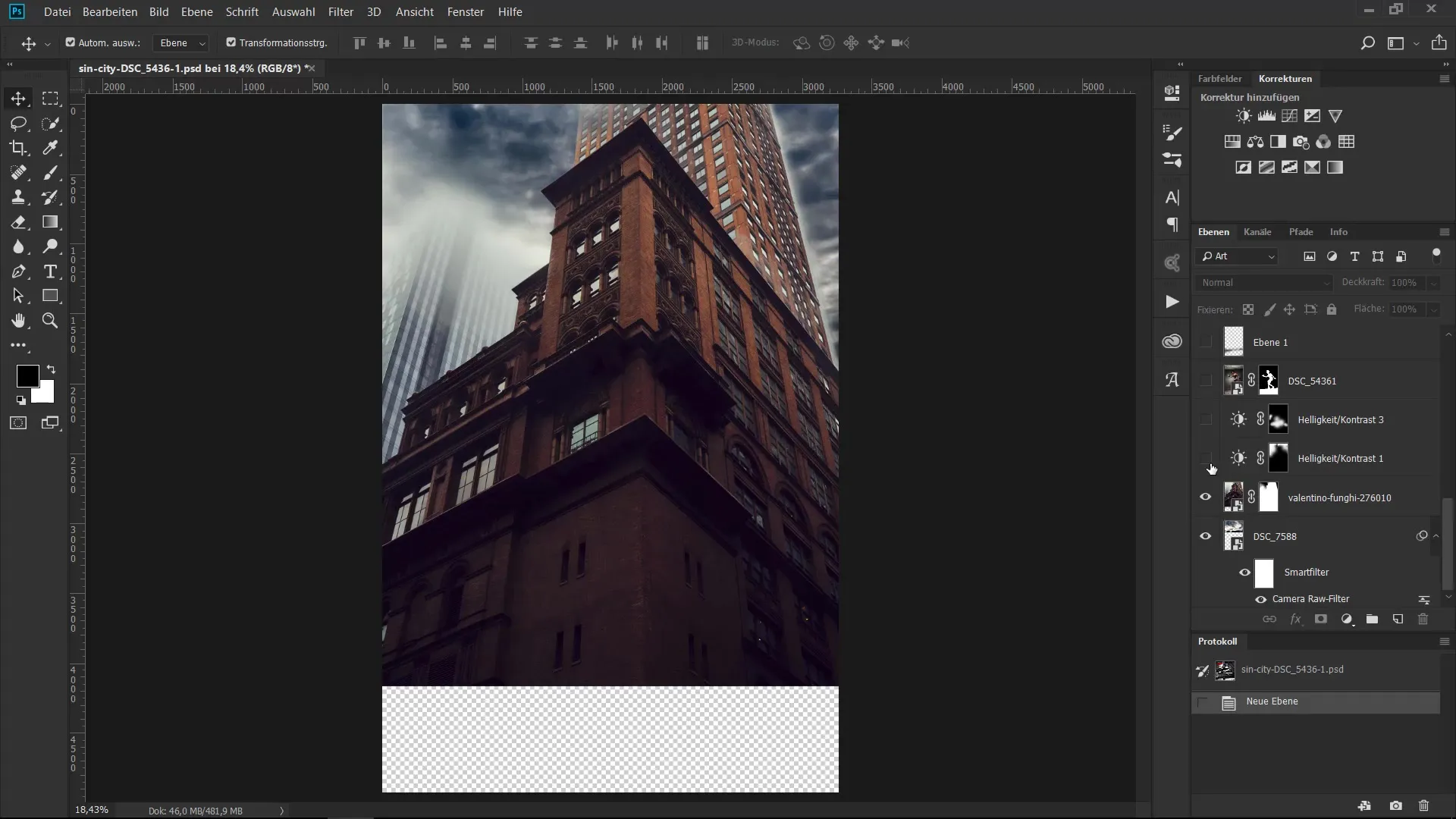
Even if I often do not name my layers, I quickly recognize them and can manage everything efficiently.
3. Isolating the Model
Now it's about isolating the model, which I did using a layer mask. You will see step by step how I photographed it in the studio.
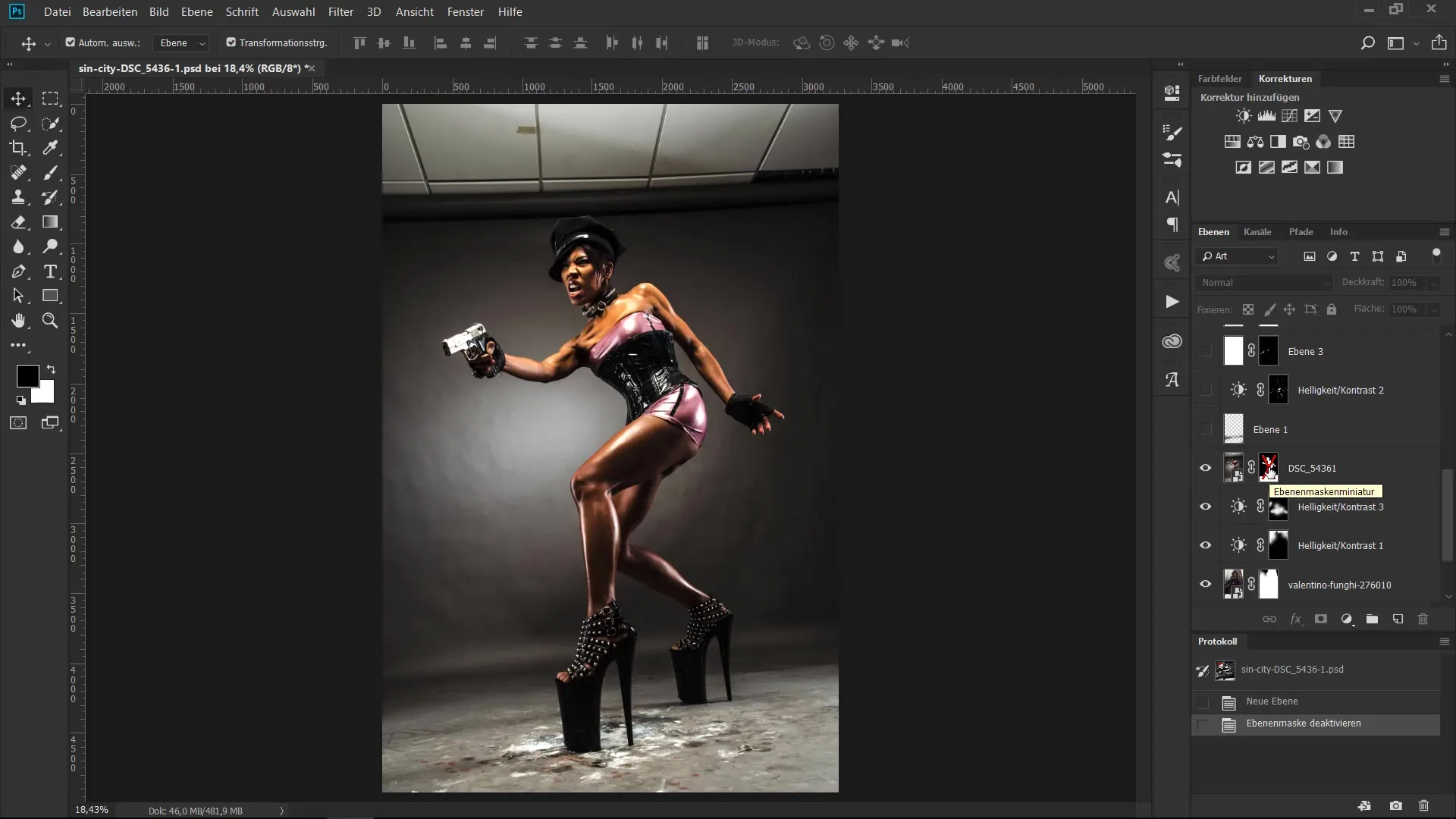
Isolation is crucial to create a seamless transition between the model and the background.
4. Designing the Background with Brushes
To harmoniously blend the background and edges of the model, a black brush is suitable for smoothing out unevenness.
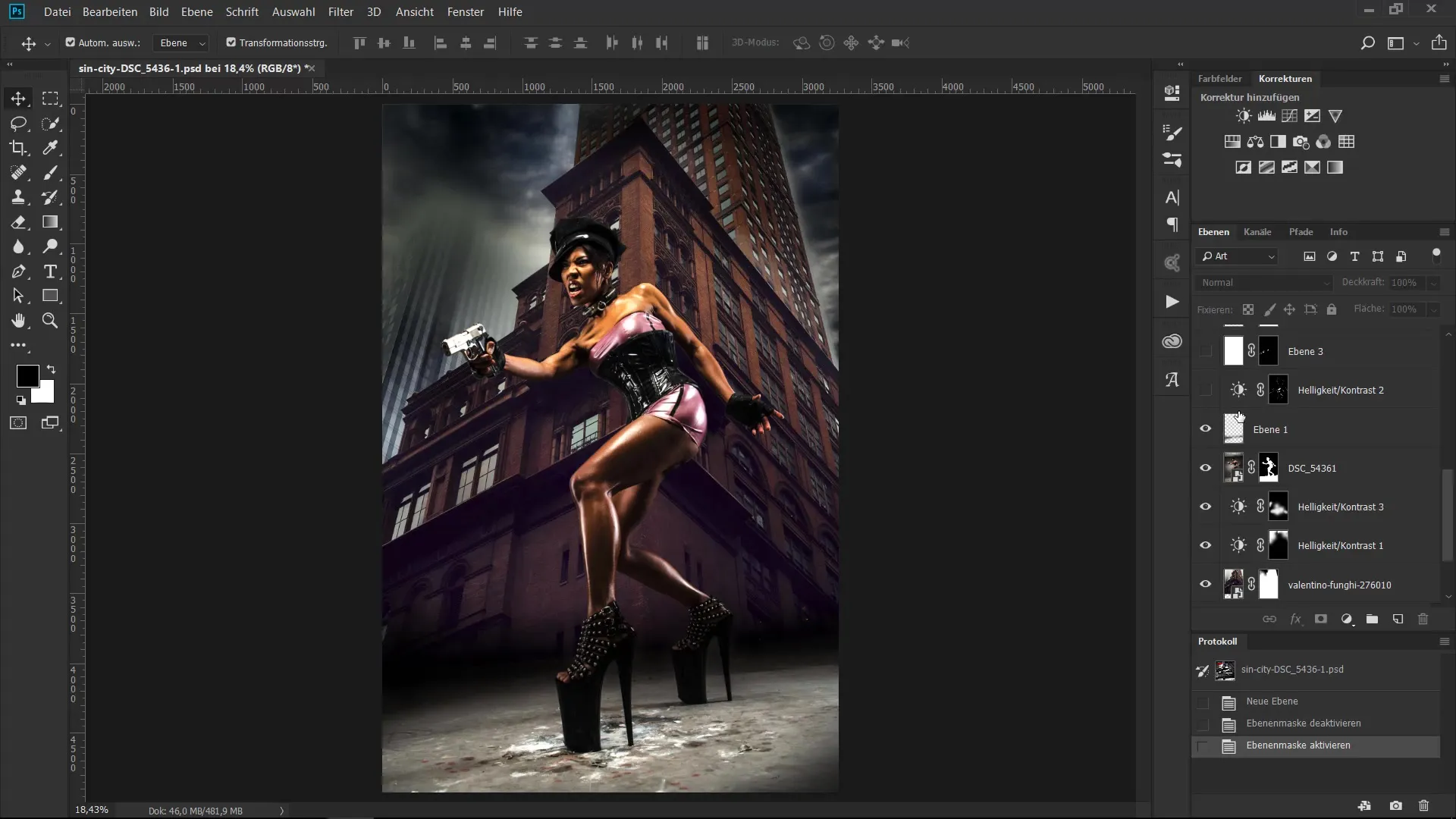
This process may seem chaotic at first, but the final look will become clearer later.
5. Adjusting Contours and Lighting
Another important step is adjusting the lighting conditions. Here, I play with brightness values to emphasize the contours.
Through these adjustments, the model stands out more from the background and becomes a focal point.
6. Adding Dynamism
To bring more dynamism to the image, I use a grunge layer. This is implemented with a white brush to simulate movement.
The right brush tip can make the image more vibrant and expressive. Keep this in mind when selecting.
7. Applying Individual Brushes in Detail
I work with a new layer and a larger brush to achieve specific effects. These steps are important to further refine your image style.
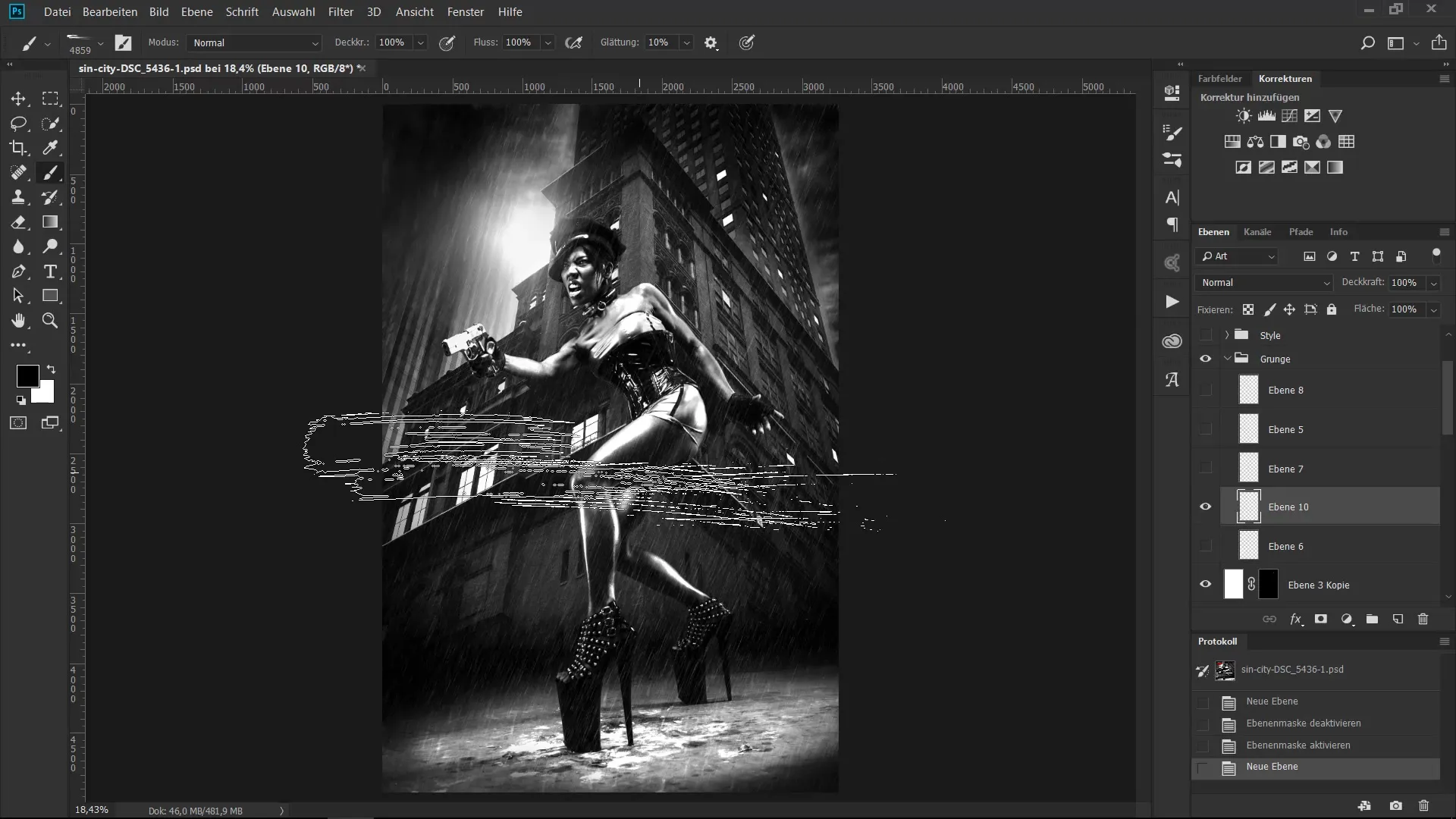
By using different types of brushes, you can personalize and adjust your image.
8. Fine Tuning
The final touch is crucial! Here you can play with the opacity of the brush layers to make them subtler or more noticeable.
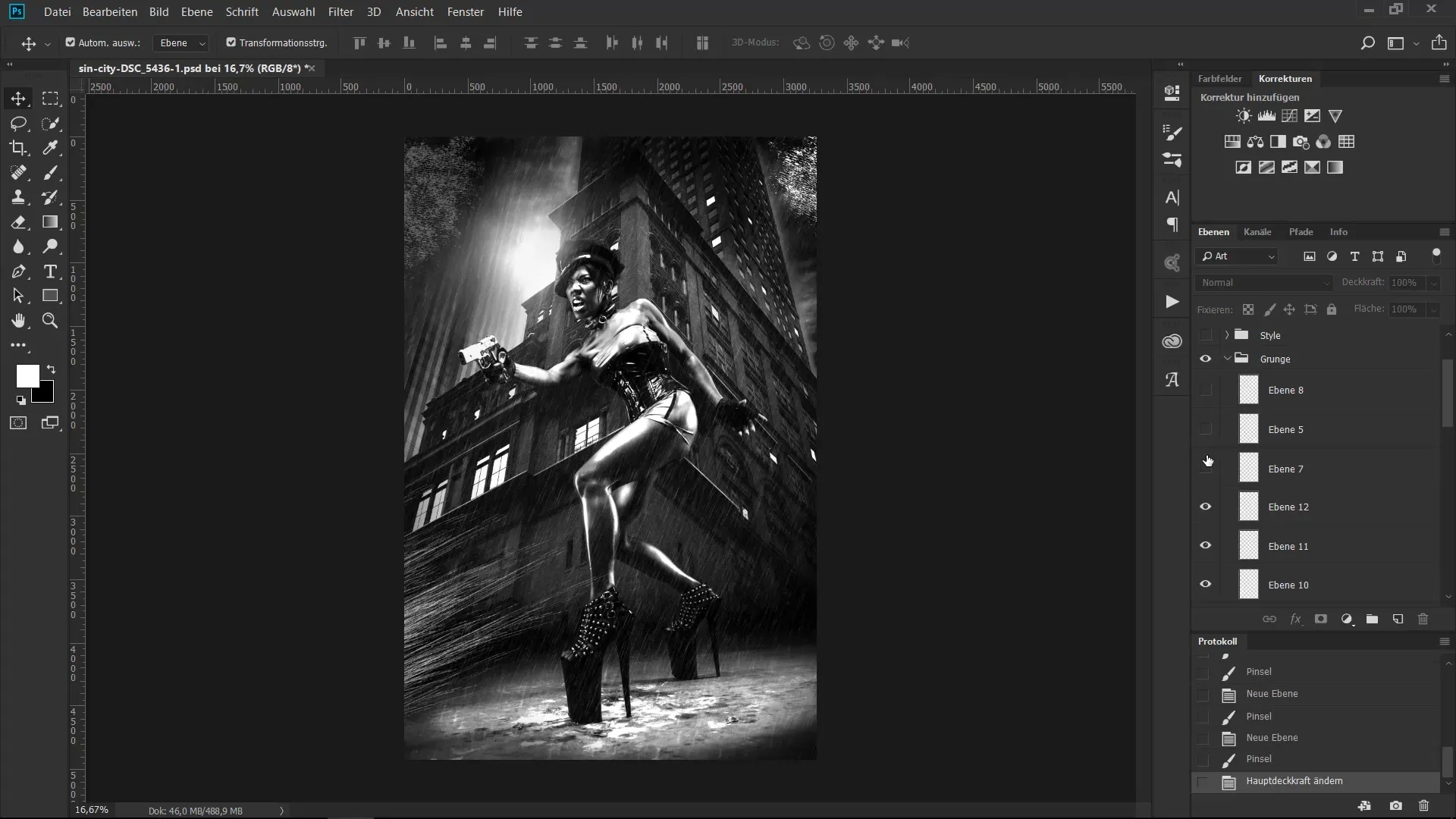
Finalizing your image ensures that you convey a clear and concise image message.
9. Strengthening the Image Message
Pause when applying brush strokes and ask yourself what message you want to convey. The right brushes support this message.
This intentional use of brushes helps to communicate the central theme of the image clearly.
10. Final Review
When you take a look at your finished work, make sure that the brush strokes end at the edges. This prevents the composition from feeling overloaded.
A well-placed brush stroke can give your images the necessary refinement to be more appealing.
Summary - The Ultimate Brush Training: Brushes as Creative Tools for Your Artworks
In conclusion, we can state that brush tips are transformative tools to enrich your artworks. Analyze your image and think about the created image statement. With the techniques described above, you can ensure that your artworks convey a clear message and are visually appealing.
Frequently Asked Questions
How do I choose the right brush tips?You should select brushes based on the desired style and image message. Pay attention to textures and shapes that complement your artwork.
When is the best time to apply brush strokes?Ideally, you add them in the last part of your editing, after the basic compositions and edits have been completed.
How can I ensure that the brushes don’t appear overwhelming?Use brushes thoughtfully and in small amounts. Remember that less is often more.
In which cases should I use opacity?Use opacity to regulate the intensity of the brush strokes and to achieve different visual effects.


